

Chem. J. Chinese Universities ›› 2024, Vol. 45 ›› Issue (10): 20240113.doi: 10.7503/cjcu20240113
• Physical Chemistry • Previous Articles Next Articles
ZHANG Mengjia, ZOU Nan, LUO Jiamei, ZHONG Xionghui, LI Ling( )
)
Received:2024-03-08
Online:2024-10-10
Published:2024-06-17
Contact:
LI Ling
E-mail:liling@fzu.edu.cn
Supported by:CLC Number:
TrendMD:
ZHANG Mengjia, ZOU Nan, LUO Jiamei, ZHONG Xionghui, LI Ling. Catalytic Performance of Zr-MOF Supported Poly Ionic Liquid for CO2 Cycloaddition Reaction[J]. Chem. J. Chinese Universities, 2024, 45(10): 20240113.
| Variable | Symbol | Code value | ||
|---|---|---|---|---|
| -1 | 0 | 1 | ||
| Temperature/℃ | X1 | 60 | 90 | 120 |
| Reaction time | X2 | 8.0 | 16 | 24 |
| Catalyst amount(mass fraction, %) | X3 | 0.05 | 0.17 | 0.30 |
Table 1 Factors and levels of RSM (Response surface methodology)
| Variable | Symbol | Code value | ||
|---|---|---|---|---|
| -1 | 0 | 1 | ||
| Temperature/℃ | X1 | 60 | 90 | 120 |
| Reaction time | X2 | 8.0 | 16 | 24 |
| Catalyst amount(mass fraction, %) | X3 | 0.05 | 0.17 | 0.30 |
| Entry | Value | Experimental value | Predictive value | |||
|---|---|---|---|---|---|---|
| X1 | X2 | X3 | Average | Standard deviation | ||
| 1 | 0 | -1 | 1 | 85.99 | 0.021 | 90.09 |
| 2 | 0 | 0 | 0 | 32.89 | 0.34 | 33.14 |
| 3 | 0 | 0 | 0 | 90.49 | 1.1 | 90.09 |
| 4 | 1 | 0 | 1 | 88.05 | 0.20 | 88.32 |
| 5 | 0 | 0 | 0 | 50.48 | 1.6 | 51.84 |
| 6 | 0 | 1 | 1 | 81.55 | 0.57 | 81.54 |
| 7 | 1 | 0 | -1 | 69.95 | 0.49 | 65.58 |
| 8 | 0 | 1 | -1 | 93.69 | 0.30 | 90.09 |
| 9 | -1 | 0 | 1 | 68.98 | 0.10 | 70.36 |
| 10 | 0 | 0 | 0 | 55.37 | 0.42 | 57.00 |
| 11 | 0 | 0 | 0 | 92.16 | 0.10 | 90.09 |
| 12 | -1 | 1 | 0 | 89.33 | 0.10 | 89.08 |
| 13 | 1 | -1 | 0 | 23.81 | 0.21 | 23.82 |
| 14 | -1 | 0 | -1 | 57.24 | 0.16 | 55.88 |
| 15 | -1 | -1 | 0 | 56.37 | 0.71 | 54.74 |
| 16 | 1 | 1 | 0 | 88.12 | 0.82 | 90.09 |
| 17 | 0 | -1 | -1 | 39.91 | 0.93 | 34.64 |
Table 2 Predictive and experimental values of conversion(%) of Box-Behnken design
| Entry | Value | Experimental value | Predictive value | |||
|---|---|---|---|---|---|---|
| X1 | X2 | X3 | Average | Standard deviation | ||
| 1 | 0 | -1 | 1 | 85.99 | 0.021 | 90.09 |
| 2 | 0 | 0 | 0 | 32.89 | 0.34 | 33.14 |
| 3 | 0 | 0 | 0 | 90.49 | 1.1 | 90.09 |
| 4 | 1 | 0 | 1 | 88.05 | 0.20 | 88.32 |
| 5 | 0 | 0 | 0 | 50.48 | 1.6 | 51.84 |
| 6 | 0 | 1 | 1 | 81.55 | 0.57 | 81.54 |
| 7 | 1 | 0 | -1 | 69.95 | 0.49 | 65.58 |
| 8 | 0 | 1 | -1 | 93.69 | 0.30 | 90.09 |
| 9 | -1 | 0 | 1 | 68.98 | 0.10 | 70.36 |
| 10 | 0 | 0 | 0 | 55.37 | 0.42 | 57.00 |
| 11 | 0 | 0 | 0 | 92.16 | 0.10 | 90.09 |
| 12 | -1 | 1 | 0 | 89.33 | 0.10 | 89.08 |
| 13 | 1 | -1 | 0 | 23.81 | 0.21 | 23.82 |
| 14 | -1 | 0 | -1 | 57.24 | 0.16 | 55.88 |
| 15 | -1 | -1 | 0 | 56.37 | 0.71 | 54.74 |
| 16 | 1 | 1 | 0 | 88.12 | 0.82 | 90.09 |
| 17 | 0 | -1 | -1 | 39.91 | 0.93 | 34.64 |
| Source | Variance | Free degree | Mean square | F | P(Prob>F) |
|---|---|---|---|---|---|
| Standard deviation=2.7 | R2=0.9940 | Adj R2=0.9863 | Pred R2=0.9685 | Mean=68.20 | Adeq precision=31.96 |
| Model | 8469.36 | 9 | 941.04 | 128.76 | <0.0001 |
| X1⁃temperature | 1798.20 | 1 | 1798.20 | 246.04 | <0.0001 |
| X2⁃time | 1346.55 | 1 | 1346.55 | 184.24 | <0.0001 |
| X3⁃catalyst | 1537.63 | 1 | 1537.63 | 210.38 | <0.0001 |
| X1X2 | 52.56 | 1 | 52.56 | 7.19 | 0.0315 |
| X1X3 | 10.18 | 1 | 10.18 | 1.39 | 0.2766 |
| X2X3 | 63.76 | 1 | 63.76 | 8.72 | 0.0213 |
| X12 | 2019.64 | 1 | 2019.64 | 276.33 | <0.0001 |
| X22 | 482.40 | 1 | 482.40 | 66.00 | <0.0001 |
| X32 | 815.13 | 1 | 815.13 | 111.53 | <0.0001 |
| Deviation | 51.16 | 7 | 7.31 | — | — |
| Lack of fit | 13.07 | 3 | 4.36 | 0.46 | 0.7268 |
| Pure error | 38.10 | 4 | 9.52 | — | — |
Table 3 Analysis of variance and statistical criteria
| Source | Variance | Free degree | Mean square | F | P(Prob>F) |
|---|---|---|---|---|---|
| Standard deviation=2.7 | R2=0.9940 | Adj R2=0.9863 | Pred R2=0.9685 | Mean=68.20 | Adeq precision=31.96 |
| Model | 8469.36 | 9 | 941.04 | 128.76 | <0.0001 |
| X1⁃temperature | 1798.20 | 1 | 1798.20 | 246.04 | <0.0001 |
| X2⁃time | 1346.55 | 1 | 1346.55 | 184.24 | <0.0001 |
| X3⁃catalyst | 1537.63 | 1 | 1537.63 | 210.38 | <0.0001 |
| X1X2 | 52.56 | 1 | 52.56 | 7.19 | 0.0315 |
| X1X3 | 10.18 | 1 | 10.18 | 1.39 | 0.2766 |
| X2X3 | 63.76 | 1 | 63.76 | 8.72 | 0.0213 |
| X12 | 2019.64 | 1 | 2019.64 | 276.33 | <0.0001 |
| X22 | 482.40 | 1 | 482.40 | 66.00 | <0.0001 |
| X32 | 815.13 | 1 | 815.13 | 111.53 | <0.0001 |
| Deviation | 51.16 | 7 | 7.31 | — | — |
| Lack of fit | 13.07 | 3 | 4.36 | 0.46 | 0.7268 |
| Pure error | 38.10 | 4 | 9.52 | — | — |
| Factor | Time/h | Catalyst(%) | Temperature/℃ | pCO2/MPa | Conversion(%) |
|---|---|---|---|---|---|
| Predictive value | 20.79 | 0.22 | 101.3 | 0.1 | 99.5 |
| Experimental value | 22.00 | 0.22 | 100.0 | 0.1 | 99.6 |
Table 4 Conversion of PO at optimum predictive and experimental factors
| Factor | Time/h | Catalyst(%) | Temperature/℃ | pCO2/MPa | Conversion(%) |
|---|---|---|---|---|---|
| Predictive value | 20.79 | 0.22 | 101.3 | 0.1 | 99.5 |
| Experimental value | 22.00 | 0.22 | 100.0 | 0.1 | 99.6 |
| Epoxide | Conversion(%) | Selectivity(%) | Epoxide | Conversion(%) | Selectivity(%) |
|---|---|---|---|---|---|
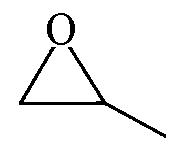 | 97.1 | >99 |  | 87.9 | 99 |
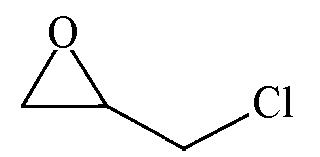 | 99.6 | >99 | 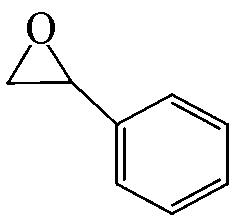 | 57.2 | 98 |
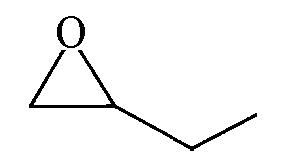 | 90.0 | 99 | 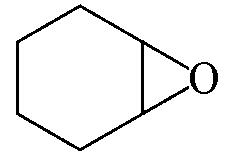 | 50.1 | 98 |
Table 5 Results of CO2 cycloaddition with different epoxides catalyzed by PBpy-Br@UiO-67
| Epoxide | Conversion(%) | Selectivity(%) | Epoxide | Conversion(%) | Selectivity(%) |
|---|---|---|---|---|---|
 | 97.1 | >99 |  | 87.9 | 99 |
 | 99.6 | >99 |  | 57.2 | 98 |
 | 90.0 | 99 |  | 50.1 | 98 |
| Catalyst | Dosage(molar ratio) | Time/h | Pressure/MPa | Temperature/℃ | Conversion(%) | Ref. |
|---|---|---|---|---|---|---|
| UiO⁃67⁃IL | 1.5 | 8 | 0.1 | 90 | 95.0 | [ |
| IL⁃ZIF⁃90 | 0.49 | 3 | 1.0 | 120 | 94.0 | [ |
| Meim⁃UiO⁃66 | 0.745 | 24 | 0.1 | 120 | 93.0 | [ |
| PBpy⁃Br@UiO⁃67 | 0.72 | 22 | 0.1 | 100 | 99.6 | This work |
Table 6 Summary of the reported CO2 cycloaddition of epichlorohydrin catalyzed by IL-MOFs catalytic systems
| Catalyst | Dosage(molar ratio) | Time/h | Pressure/MPa | Temperature/℃ | Conversion(%) | Ref. |
|---|---|---|---|---|---|---|
| UiO⁃67⁃IL | 1.5 | 8 | 0.1 | 90 | 95.0 | [ |
| IL⁃ZIF⁃90 | 0.49 | 3 | 1.0 | 120 | 94.0 | [ |
| Meim⁃UiO⁃66 | 0.745 | 24 | 0.1 | 120 | 93.0 | [ |
| PBpy⁃Br@UiO⁃67 | 0.72 | 22 | 0.1 | 100 | 99.6 | This work |
| 1 | Sanz⁃Pérez E. S., Murdock C. R., Didas S. A., Jones C. W., Chem. Rev., 2016, 116(19), 11840—11876 |
| 2 | Zhang Z., Yao Z. Z., Xiang S., Chen B., Energy Environ. Sci., 2014, 7(9),2868—2899 |
| 3 | Trickett C. A., Helal A., Al⁃Maythalony B. A., Yamani Z. H., Cordova K. E., Yaghi O. M., Nat. Rev. Mater., 2017, 2, 17045 |
| 4 | Wang W., Wang S., Ma X., Gong J. X., Chem. Soc. Rev., 2011, 40(7), 3703—3727 |
| 5 | Maina J. W., Pozo-Gonzalo C., Kong L., Schütz J., Hill M., Dumée. L. F., Mater. Horiz., 2017, 4(3), 345—361 |
| 6 | He H., Perman J. A., Zhu G., Ma S., Small, 2016, 12(46), 6309—6324 |
| 7 | Ding M., Jiang H. L., ACS Catal., 2018, 8(4), 3194—3201 |
| 8 | Liu F., Duan X., Liu M., Du J., Ma J., Liu F., Ind. Eng. Chem. Res., 2021, 60(42), 15027—15036 |
| 9 | Ke S. C., Luo T. T., Chang G. G., Huang K. X., Li J. X., Ma X. C., Wu J., Chen J., Yang X. Y., Inorg. Chem., 2020, 59(3), 1736—1745 |
| 10 | Deng L., Su Q., Tan X., Wang Y., Dong L., He H., Li Z., Cheng W., Mol. Catal., 2022, 519, 112153 |
| 11 | Zhang W., Dai J., Wu Y. C., Chen J. X., Shan S. Y., Cai Z., Zhu J. B., ACS Macro Lett., 2022, 11(2), 173—178 |
| 12 | Gonzalez A. C. S., Felgueiras A. P., Aroso R. T., Carrilho R. M. B., Pereira M. M., J. Organomet. Chem., 2021, 950, 121979 |
| 13 | Liu A. H., He L. N., Peng S. Y., Pan Z. D., Wang J. L., Gao J., Sci. China Chem., 2010, 53(7), 1578—1585 |
| 14 | Cai S., Zhu D., Zou Y., Zhao J., Nanoscale Res. Lett., 2016, 11(1), 321 |
| 15 | Motokucho S., Takenouchi Y., Satoh R., Morikawa H., Nakatani H., ACS Sustainable Chem. Eng., 2020, 8(11), 4337—4340 |
| 16 | Zhao Z., Kong X., Yuan Q., Xie H., Yang D., Zhao J., Fan H., Jiang L., Phys. Chem. Chem. Phys., 2018, 20(29), 19314—19320 |
| 17 | Xu Y., Yuan D., Wang Y., Yao Y., Dalton Trans., 2017, 46(18),5848—5855 |
| 18 | Bousquet B., Martinez A., Dufaud V., ChemCatChem, 2018, 10(4), 843—848 |
| 19 | Sharma N., Dhankhar S. S., Nagaraj C. M., Microporous Mesoporous Mater., 2019, 280, 372—378 |
| 20 | Noh J., Kim Y., Park H., Lee J., Yoon M., Park M. H., Kim Y., Kim M., J. Ind. Eng. Chem., 2018, 64, 478—483 |
| 21 | Abdelsayed V., Gardner T. H., Kababji A. H., Fan Y., Appl. Catal. A: Gen., 2019, 586, 117225 |
| 22 | Zhang L., Yuan S., Fan W., Pang J., Li F., Guo B., Zhang P., Sun D., Zhou H. C., ACS Appl. Mater. Interfaces, 2019, 11(25), 22390—22397 |
| 23 | Wu Y., Song. X., Xu S., Chen Y., Oderinde O., Gao L., Wei R., Xiao G., Dalton Trans., 2020, 49(2), 312—321 |
| 24 | Alves M., Grignard B., Boyaval A., Méreau R, De Winter J., Gerbaux P., Detrembleur C., Tassaing T., Jérôme C., ChemSusChem, 2017, 10(6),1128—1138 |
| 25 | Shen Y. M., Duan W. L., Shi M., Eur. J. Org. Chem., 2004, 2004(14), 3080—3089 |
| 26 | Sun Y., Huang H., Vardhan H., Aguila B., Zhong C., Perman J. A., Al⁃Eniz A. M., Nafady A., Ma S., ACS Appl. Mater. Interfaces, 2018, 10(32), 27124—27130 |
| 27 | Yin M., Wang L., Tang S., ACS Appl. Mater. Interaces, 2022, 14(50), 55674—55685 |
| 28 | Du Y. R., Yang X., Wang Y. F., Guan P. X., Wang R., Xu B. H., Mol. Catal., 2022, 520, 112164 |
| 29 | Li Y., Zhang X., Lai S., Dong H., Chen X., Wang X., Nie Y., Sheng Y., Zhang S., Fuel, 2012, 94, 617—619 |
| 30 | Chen X., Yuan S., Abdeltawab A. A., Al-Deyab S. S., Zhang J., Yu L., Yu G., Sep. Purif. Technol., 2014, 133, 187—193 |
| 31 | Ding L. G., Yao B. J., Jiang W. L., Li J. T., Fu Q. J., Li Y. A., Liu Z. H., Ma J. P., Dong Y. B., Inorg. Chem., 2017, 56(4), 2337—2344 |
| 32 | Bui M., Adjiman C. S., Bardow A. Anthony E. J., Boston A., Brown S., Fennell P. S., Fuss S., Galindo A., Hackett L. A., Hallett J. P., Herzog. H. J., Jackson G., Kemper J., Krevor S., Maitland G. C., Matuszewski M., Metcalfe L. S., Petit C., Puxty G., Reimer J., Reiner D. M., Rubin E. S., Scott S. A., Shah N., Smit B., Trusler J. P. M., Webley P., Wilcox J., Mac Dowell N., Energy Environ. Sci., 2018, 11(5), 1062—1176 |
| 33 | Ding M., Flaig R. W., Jiang H. L., Yaghi O. M., Chem. Soc. Rev., 2019, 48(10), 2783—2828 |
| 34 | Ji H., Naveen K., Lee W., Kim T. S., Kim D., Cho D. H., ACS Appl. Mater. Interfaces, 2020, 12(22), 24868—24876 |
| 35 | Wu Y., Yang X., Yuan H., Zhang Z., Shi S., Wei R., Gao L., Xiao G., Microporous Mesoporous Mater., 2021, 310, 110578 |
| 36 | Katz M. J., Brown Z. J., Colón Y. J., Siu P. W., Scheidt K. A., Snurr R. Q., Hupp J. T., Farha O. K., Chem. Commun., 2013, 49(82), 9449—9451 |
| 37 | Mazille F., Fei Z., Kuang D., Zhao D., Zakeeruddin S. M., Grätzel M., Dyson P. J., Inorg. Chem., 2006, 45(4), 1585—1590 |
| 38 | Ambroz F., Macdonald T. J.,Martis V., Parkin V. I., Small Methods, 2018, 2(11), 1800173 |
| 39 | Wang X., Lyu Q., Tong T., Sun K., Lin L. C., Tang C. Y., Yang F., Guiver M. D., Quan X., Dong Y., Nat. Commun., 2022, 13, 266 |
| 40 | Kathalikkattil A. C., Babu R., Roshan R. K., Lee H., Kim H., Tharun J., Suresh E., Park D. W., J. Mater. Chem. A, 2015, 3(45), 22636—22647 |
| 41 | Tharun J., Bhin K. M., Roshan R., Kim D. W., Kathalikkattil A. C., Babu R., Ahn H. Y., Won Y. S., Park D. W., Green Chem., 2016, 18(8), 2479—2487 |
| 42 | Boz E., Tüzün N. Ş., J. Organomet. Chem., 2013, 724, 167—176 |
| 43 | Liang J., Chen R. P., Wang X. Y., Liu T. T., Wang X. S., Huang Y. B., Cao R., Chem. Sci., 2017, 8(2), 1570—1575 |
| [1] | GONG Wenpeng, ZHOU Linnan. Fluorescent Detection of Hydrogen Sulfide Using Metal-organic Framework CAU-10-NH-DNBA Functionalized with 3,5-Dinitrobenzoic Acid [J]. Chem. J. Chinese Universities, 2024, 45(8): 20240069. |
| [2] | JI Chao, LI Wen, ZHANG Lirong, HUA Jia, LIU Yunling. Construction of a Eu-MOF Material with Fe3+ and Nitro-aromatic Explosives Fluorescence Detection Performance [J]. Chem. J. Chinese Universities, 2024, 45(2): 20230455. |
| [3] | TANG Haiyan, ZI Limeng, ZHANG Bing, FU Yu. Preparation and Application of CuBDC-NH2/PmPD Mixed Matrix Membranes for Photothermal Conversion [J]. Chem. J. Chinese Universities, 2024, 45(2): 20230379. |
| [4] | LU Chunyu, JING Yuan, WEI Xiaofei, YAO Shiwei, WANG Zhifei, WANG Shubin, DAI Fangna. Advantages and Research Progress of Metal-organic Framework in Supercapacitors [J]. Chem. J. Chinese Universities, 2024, 45(2): 20230450. |
| [5] | CHEN Xiaoping, WANG Xutan, LIU Ning, WANG Qingxiang, NI Jiancong, YANG Weiqiang, LIN Zhenyu. MOFs-based Microfluidic Chips for Real-time Online Determination of Multiple Heavy Metal Ions [J]. Chem. J. Chinese Universities, 2024, 45(2): 20230395. |
| [6] | HUANG Rongting, ZHU Guiying, LI Xinyu, TANG Daoyuan, ZHANG Yong, WANG Bin, ZHU Jintuo, HE Xinjian, XU Huan. Morphological Manipulation of Highly Electroactive Poly(lactic acid) Nanofibrous Membranes for Efficient Removal of Airborne PM0.3 [J]. Chem. J. Chinese Universities, 2024, 45(1): 20230353. |
| [7] | LI Xin, ZHOU Ying, WANG Dingnan, PEI Yong, WU Bin, ZHANG Yiming. Selective Adsorption and Computational Simulation of MOF/MIPs Based on Boron-affinity Molecular Imprinting Strategy on Salbutamol [J]. Chem. J. Chinese Universities, 2024, 45(1): 20230348. |
| [8] | LIU Jinlu, GUO Jiayu, HUA Jia, LI Guanghua, SHI Zhan, FENG Shouhua. Construction and Adsorption Properties of an Amide-based Cu-MOF [J]. Chem. J. Chinese Universities, 2023, 44(6): 20220746. |
| [9] | HAN Xu, BAI Xue, ZHANG Zhong, YANG Yanli, CUI Hong, LIU Shuxia. Synthesis and Deep Desulfurization Activity of Fuel Oil of PW11M@Cu3(BTC)2 Hybrid [J]. Chem. J. Chinese Universities, 2023, 44(4): 20220702. |
| [10] | CHEN Shaochen, CHENG Min, WANG Shihui, WU Jinkui, LUO Lei, XUE Xiaoyu, JI Xu, ZHANG Changchun, ZHOU Li. Transfer Learning Modeling for Predicting the Methane and Hydrogen Delivery Capacity of Metal-organic Frameworks [J]. Chem. J. Chinese Universities, 2023, 44(2): 20220459. |
| [11] | ZOU Yingying, ZHANG Chaoqi, YUAN Ling, LIU Chao, YU Chengzhong. Recent Advances in Metal-organic Framework Derived Hollow Superstructures: Synthesis and Applications [J]. Chem. J. Chinese Universities, 2023, 44(1): 20220613. |
| [12] | YANG Qingfeng, LYU Liang, LAI Xiaoyong. Progress on Preparation and Electrocatalytic Application of Hollow MOFs [J]. Chem. J. Chinese Universities, 2023, 44(1): 20220666. |
| [13] | LU Yu, WANG Tie. Research Progress of Hollow Metal-organic Frameworks [J]. Chem. J. Chinese Universities, 2023, 44(1): 20220662. |
| [14] | ZHAO Yingzhe, ZHANG Jianling. Applications of Metal-organic Framework-based Material in Carbon Dioxide Photocatalytic Conversion [J]. Chem. J. Chinese Universities, 2022, 43(7): 20220223. |
| [15] | LU Cong, LI Zhenhua, LIU Jinlu, HUA Jia, LI Guanghua, SHI Zhan, FENG Shouhua. Synthesis, Structure and Fluorescence Detection Properties of a New Lanthanide Metal-Organic Framework Material [J]. Chem. J. Chinese Universities, 2022, 43(6): 20220037. |
| Viewed | ||||||
|
Full text |
|
|||||
|
Abstract |
|
|||||